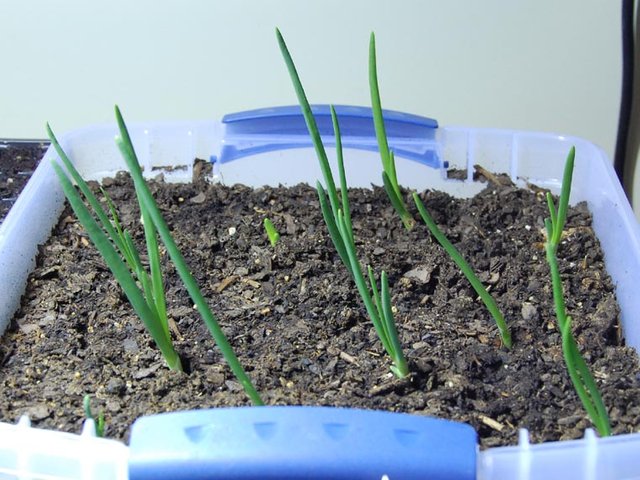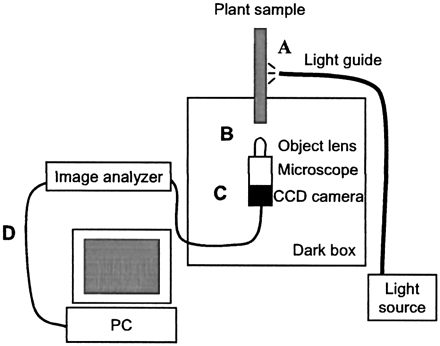What does light do to roots?
It might seem strange to think about, but plant roots are able to perceive light and react to it just like other parts of plants.
We are all very familiar with the type of school science experiment shown in the image here demonstrating phototropism:

It makes a lot of sense that the tissues above ground need to respond to sense light. It is vital to the plant's survival that they efficiently reach light in order to photosynthesize.
Although perhaps hidden from view, there are a number of behaviors that roots also need to carry out that are connected to light. These include processes like growing away from light (negative phototropism), root growth, and the amount of root branching. We know that light plays a vital role for plant roots, because mutant plants without light sensing proteins are not able to develop normal roots [1].
How do they sense light?
There are two obvious ways that roots could sense light:
A signal is sent from the green parts of the plant above ground
The roots sense photons directly
It turns out both of these pathways are partially responsible for letting the roots know about the light conditions.
A number of plant hormones are responsible for transmitting information about light from the shoots down to the roots. The two most important are thought to be auxin and jasmonic acid [1]. These hormones are synthesized in the leaves and can then be sent down to the roots through the vascular tissue. Note that although they are involved in root light perception, they are also involved in a myriad of other plant processes as well.
Investigators found that light can be transmitted down the plant through the vascular tissue [2]. In their experiment, they put pieces of plants through a light-proof box. They could then measure what light made it through the plant part with a sensor on the inside of the box. See below for a diagram from their paper:

Other researchers have confirmed that the roots in Arabidopsis thaliana sense the transmitted light using phytochrome B proteins. This is one of the canonical red-light sensing proteins which has been studied thorougly in other plant tissue. From these studies, we know now that these proteins are used in the roots as well.
To the question in your title, my Magic 8-Ball says:
Hi! I'm a bot, and this answer was posted automatically. Check this post out for more information.
Downvoting a post can decrease pending rewards and make it less visible. Common reasons:
Submit
Congratulations @servusminervae! You received a personal award!
You can view your badges on your Steem Board and compare to others on the Steem Ranking
Do not miss the last post from @steemitboard:
Vote for @Steemitboard as a witness to get one more award and increased upvotes!
Downvoting a post can decrease pending rewards and make it less visible. Common reasons:
Submit